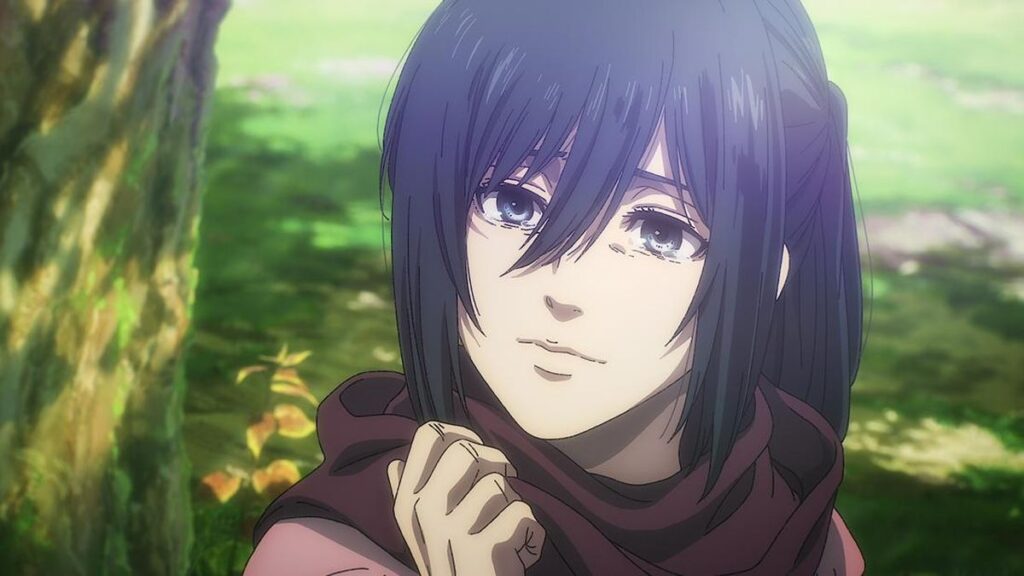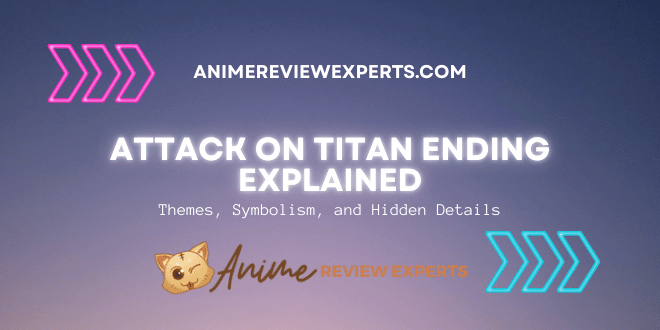Few anime in history have left as deep a mark as Attack on Titan. When the final episode aired, it wasn’t just another series ending — it was the conclusion of a cultural phenomenon that had spanned over a decade, crossed language barriers, and inspired countless fan theories, discussions, and creative works.
The Attack on Titan finale trended worldwide within minutes of release, with hashtags like #ThankYouIsayama and #AOTFinale dominating Twitter/X. Anime fans gathered in online forums, Discord servers, and live watch parties, reacting in real-time to the heartbreaking conclusion of Eren Yeager’s story.
The sheer anticipation leading up to the finale was unprecedented — MAPPA’s adaptation had been building toward this moment since taking over from WIT Studio. Longtime fans had waited years to see how the Rumbling, one of the most destructive events in anime history, would be portrayed. Would the anime soften the manga’s controversial ending, or stay faithful to Isayama’s vision?
From its very first episode in 2013, Attack on Titan asked hard questions about freedom, morality, and the nature of humanity. The finale didn’t give easy answers — instead, it forced viewers to wrestle with complex ideas long after the credits rolled. And that’s exactly why it’s one of the most discussed anime conclusions of all time.
Quick Recap of the Final Episode

The last episode wastes no time — the scale of destruction is immediate. The Colossal Titans march across the landscape, leaving behind nothing but dust, rubble, and silence. The Rumbling is at its peak, with entire nations reduced to ruins. We hear terrified voices screaming in the distance as the camera pans across devastated cities — a chilling reminder of the stakes at hand.
“I keep moving forward… until I destroy my enemies.” – Eren Yeager
Eren’s Founding Titan form is a grotesque, almost skeletal behemoth stretching across the horizon. The alliance — Mikasa, Armin, Levi, Reiner, Pieck, Jean, and Connie — make a desperate airborne assault to reach him.
The tension spikes as Armin transforms into the Colossal Titan to clash with Eren head-on, triggering a massive explosion that shakes the battlefield. In the chaos, Levi fights to take down Zeke, delivering a swift killing blow that ends the Beast Titan once and for all.
Inside the surreal, dreamlike Paths dimension, Eren and Armin have a final conversation. Eren admits his feelings for Mikasa and reveals his plan was to make himself the ultimate villain so his friends could be heroes. His voice trembles, and for the first time in years, we see the vulnerability he’s kept hidden.
Meanwhile, Mikasa breaks into Eren’s Titan mouth, her face a mixture of grief and determination. She kisses him goodbye — a moment fans will remember forever — before severing his head with a single, clean strike.
When Eren dies, the Titan curse ends. Across the world, Titans dissolve into steam, freeing countless Eldians. The survivors stare in awe and disbelief as the once-unthinkable becomes reality.
Finally, the epilogue shows a quieter moment: a bird flying overhead wraps Mikasa’s scarf back around her neck. Whether this is a symbolic gesture or Eren’s lingering presence is left to interpretation — but for many, it’s a perfect, bittersweet farewell.
For fans who want to explore how endings like this reflect wider anime trends, see Anime Industry Trends 2025: What’s Hot, What’s Not, and What to Expect. check out Anime Industry Trends 2025: What’s Hot, What’s Not, and What to Expect.
Eren Yeager’s Motivations
If there’s one thing the Attack on Titan finale made clear, it’s that Eren Yeager’s motivations can’t be boiled down to a single word like “hero” or “villain.” His journey from a determined child in Shiganshina to the architect of the Rumbling is a tragic descent shaped by trauma, visions of the future, and an unyielding sense of purpose.
The Weight of Predetermined Fate
Eren’s greatest burden came not from the Titans themselves, but from his own memories. As the holder of the Attack Titan, he inherited not just its power but also the ability to glimpse future events. This is why he often seemed detached, as if living in two timelines at once.
In a haunting scene from the Paths, Eren admits to Armin:
“I don’t know why… but from the moment I saw it… I knew I had to keep moving forward.”
This line is powerful because it encapsulates his belief that he was locked into a destiny he couldn’t escape — a direct parallel to his earlier declaration as a boy to “destroy all the Titans,” even before he understood the full truth.
The Ruthless Logic of the Rumbling
From a purely strategic standpoint, Eren’s plan was horrifying but calculated. He believed that by becoming the world’s most feared enemy, he could unite humanity against himself. This would:
- Save his friends from persecution as Eldians.
- Eliminate most of the immediate threats to Paradis.
- Allow his loved ones to live as “heroes” who ended the threat.
However, this logic is deeply flawed. By killing billions, Eren ensured that survivors would carry generational hatred toward Paradis. The cycle of violence may have been slowed, but not erased — a theme we’ll explore later.
Love for Mikasa and Armin
One of the most emotionally devastating revelations in the finale is Eren’s confession about Mikasa. In the anime-exclusive expanded dialogue, he admits:
“I wanted to be with her… for years. Even after I died.”
This humanizes him in a way that’s almost uncomfortable — it’s easier to label him as a monster than to see him as a man who carried love and longing alongside his capacity for mass destruction.
His bond with Armin is equally important. In their final exchange, Eren essentially passes the torch, entrusting Armin to guide humanity toward a better path, even as he acknowledges the damage he’s done.
Parallels to Early Eren
Eren’s motivations in the finale mirror his earliest actions — a refusal to accept the world as it is. In episode one, he risked everything to escape the walls and seek freedom. In the finale, he risks the entire world for that same ideal, only to discover that freedom may be an illusion when destiny has already chosen your path.
Themes in the Ending – Freedom, Cycles, and Sacrifice
The Attack on Titan finale is more than just a battle conclusion — it’s a thematic culmination of everything Hajime Isayama set up from the first chapter. Three core themes stand out as the backbone of the ending: freedom vs destiny, cycles of violence, and sacrifice and redemption.
Freedom vs Destiny
From the opening episode, Eren’s identity was rooted in the desire for freedom. His iconic line, “If we kill all our enemies over there… will we finally be free?” foreshadowed the central conflict: is true freedom ever attainable, or are we bound by forces beyond our control?
By the finale, Eren’s definition of freedom is twisted. His actions are driven by visions from the Attack Titan’s future memories — visions he claims he cannot change. This creates a painful contradiction:
- Early Eren: Believes in absolute free will and rejects limitations.
- Final Eren: Accepts that every step he took was predetermined, yet still acts as though he’s choosing.
The anime uses visual callbacks to emphasize this tension. In the Paths sequence, the younger Eren is shown side by side with his older self, creating a mirror between the boy who wanted to see the ocean and the man who would drown the world in blood to protect it.
Cycles of Violence
One of the most sobering messages of the ending is that peace is fragile and often temporary. Even with the Titans gone, the alliance faces an uncertain future. The finale doesn’t end with global harmony — it ends with political tension, as outside nations still view Eldians with suspicion.
This echoes the story’s historical allegories:
- The conflict between Marley and Eldia mirrors real-world cycles of oppression and retaliation.
- Each side sees itself as the victim and the other as the aggressor, perpetuating endless revenge.
The Rumbling, while catastrophic, is just another chapter in this cycle. In one of the Paths conversations, Eren himself admits:
“There’s no stopping this. One side will always seek to destroy the other.”
The ending challenges the viewer: was Eren’s choice truly about ending the cycle, or was he simply another participant?
Sacrifice and Redemption
Eren’s death is the ultimate paradox — an act of destruction to create the possibility of peace. By framing himself as the ultimate villain, he gives his friends the chance to be celebrated as saviors. This is a classic “necessary evil” trope, but with a tragic twist: even his closest allies struggle to forgive him.
Mikasa’s role in delivering the final blow adds another layer. Her love for Eren makes her act one of both mercy and resolve. She frees the world from the Titans, but also releases Eren from the burden he carried.
Armin’s later diplomacy reflects the other side of redemption — building trust in a post-Titan world. Yet, the series ends without a guarantee of lasting peace, reinforcing the idea that sacrifice does not always ensure a perfect future.
Symbolism Throughout the Finale – Visual Language of Farewell
Hajime Isayama has always used visual motifs to add depth to Attack on Titan, and the finale is a masterclass in storytelling through symbolism. Every image feels deliberate, serving as a thematic echo of the past or a hint toward lingering questions.
Birds and Freedom
Birds have been a recurring symbol since the very first episode, when Eren gazes at one soaring over the Walls. Throughout the series, birds represent freedom beyond human reach — something pure and unattainable, yet deeply desired.
In the finale’s most tender moment, a white bird appears in the aftermath of the Rumbling. As Mikasa sits beneath the tree where Eren is buried, the bird swoops down and gently wraps her scarf back around her neck.
The scarf is loaded with meaning:
- It’s the same scarf Eren gave Mikasa when they first met, symbolizing his protection and their bond.
- Wrapping it back around her is an intimate gesture, even in death.
- The act is subtle enough to be interpreted in two ways:
- As a symbolic farewell, showing that Mikasa can move forward while still cherishing him.
- As a hint that Eren’s spirit lives on, perhaps within the natural world.
Fans point out that the bird’s color and flight pattern mirror earlier scenes where Eren’s POV follows a bird in the sky — a visual link that reinforces this interpretation.
The Sea as a Metaphor
The ocean first appeared at the end of Season 3 as the ultimate symbol of freedom. For the characters, reaching it meant they had broken free of the Walls and could see the world as it truly was. Eren famously stood at the shore and said:
“If we kill all our enemies over there… will we finally be free?”
In the finale, the sea reappears, but its meaning has changed. Now, it’s not a promise — it’s a reminder that beyond one boundary lies another conflict. The vast waters represent both possibility and danger, suggesting that even when physical barriers fall, ideological ones remain.
Titan Powers and Legacy
When Eren dies, all Titan powers vanish instantly — a visual and thematic cleansing. Shifters revert to human form, and mindless Titans crumble into steam. The curse that defined the world for centuries is gone.
Yet, this eradication is bittersweet:
- It’s a liberation for Eldians who lived in fear of transforming.
- It’s also the loss of a cultural and historical identity — Titan powers, for all their destruction, were tied to Eldian heritage.
The moment reinforces a recurring question in Attack on Titan: when a power is taken away, do people change, or do they simply find new ways to fight?
These symbols aren’t just visual flourishes — they’re emotional signposts that connect the ending to the story’s beginning, creating a full-circle narrative without spelling out every answer.
Hidden Details & Foreshadowing
Isayama is known for meticulous foreshadowing. The finale is rich with callbacks.
Manga vs Anime Differences
The anime finale largely mirrors the manga’s controversial conclusion but polishes pacing and emotional beats. Notably, some visual cues — like the scarf scene — feel more poignant in animation.
Scenes Mirrored from Early Episodes
- Mikasa’s farewell to Eren mirrors her childhood rescue scene.
- Armin’s final goodbye recalls the trio’s early dream of seeing the outside world.
- The destruction wrought by The Rumbling echoes the fall of Wall Maria, showing how cycles repeat.
Fan Reactions & Theories
Popular Theories Proven or Debunked
- The “Eren Survives” Theory – Debunked. His death is final.
- Time Loop Theory – Hinted at through Attack Titan’s future memories, but not explicitly confirmed.
- Eren as the Bird – Strongly implied but left open to interpretation.
Fans continue to debate whether Eren’s plan was justified or if he was simply consumed by his power. These discussions keep the series alive long after its ending.
Conclusion – My Take
The Attack on Titan ending is not the neat, happy resolution some fans wanted. It’s messy, morally complex, and deeply human — which is exactly why it’s unforgettable.
Whether you view Eren as a tragic hero or an unforgivable villain, the finale cements Attack on Titan as one of anime’s most ambitious narratives. It challenges viewers to think about freedom, fate, and the cost of peace.
If you’re inspired to rewatch the series or explore similar epic anime, you can find where to stream it in Best Anime Streaming Platforms: A Complete Guide for 2025.
And if you want something more interactive after such a heavy ending, try Anime-Based Board Games: The Perfect Blend of Strategy, Fun, and Fandom.
What’s your interpretation of the ending? Share your thoughts in the comments — this debate is far from over.
 AnimeReviewExperts
AnimeReviewExperts

